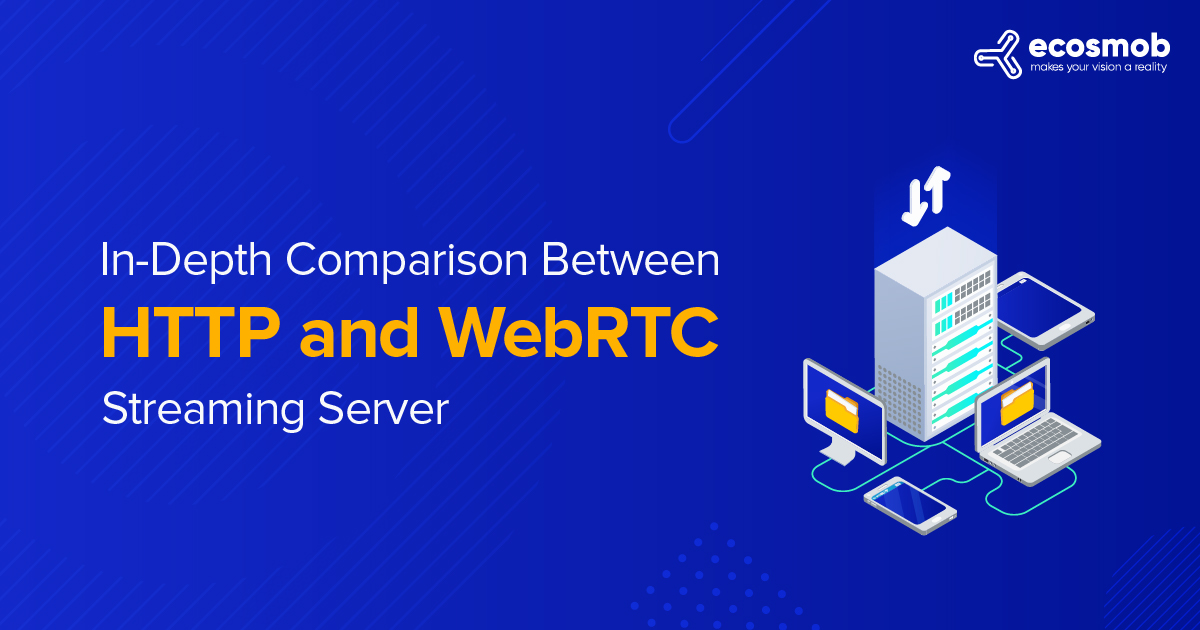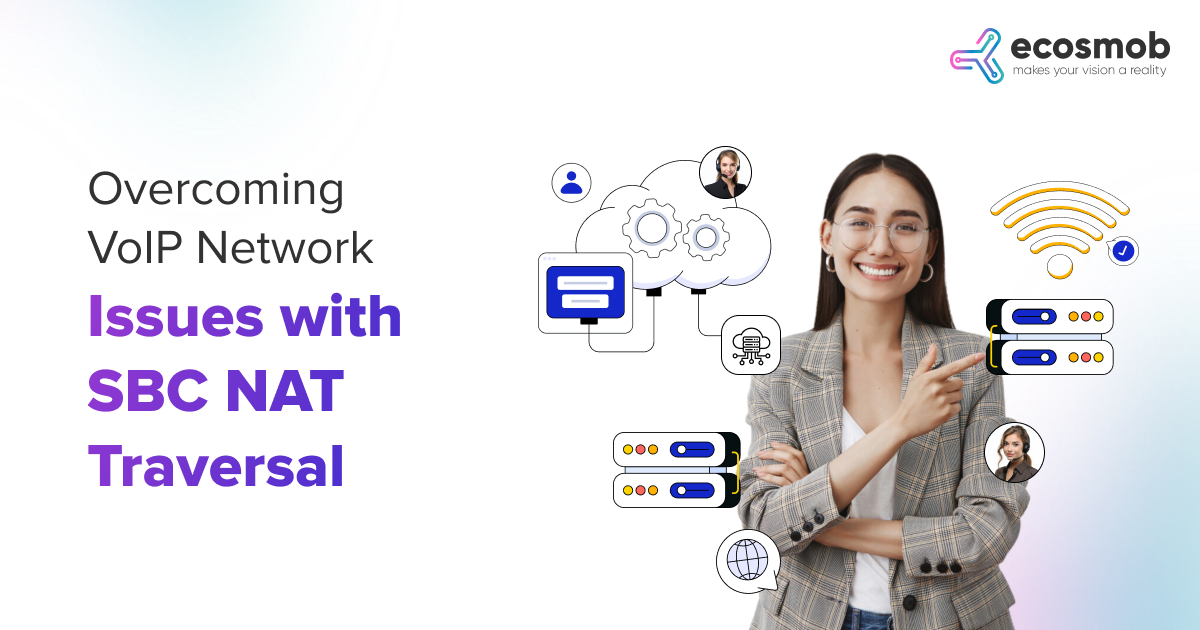Streaming WebRTC latency reduction has been a hot topic for a while. In the past, HTTP-based streaming was well-known to experience a few seconds or even a minute latency. The challenge is which strategy to use with traditional broadcast latency in single-digit seconds and developing options like WebRTC solution development. You can send video using WebRTC streaming server in under 500 milliseconds, not just in sub-seconds. It provides the lowest latency streaming technology, allowing for almost immediate transmission.
Here, in this article, we’ll examine WebRTC’s functionality and compare it with HTTP from the viewpoint of a WebRTC streaming service. Let’s start!
A Brief Overview of HTTP and WebRTC streaming server
WebRTC Streaming latency reduction has been a prominent topic for some time. Latencies of tens of seconds or even in the range of one minute are not unheard of historically with HTTP-based streaming. The dilemma is which strategy to choose, given that WebRTC latency for traditional broadcast is in the field of single-digit seconds. For emerging approaches like WebRTC, latency can be as low as a single second.
HTTP-Based Streaming
HTTP-based protocols are just standard web servers sending out progressive downloads. No matter the connection, program, or device, they use adaptive bitrate streaming to deliver the best video quality and watching experience. MPEG-DASH, Apple’s HLS, Adobe HDS, and Microsoft Smooth Streaming are some of the most popular HTTP-based protocols.
WebRTC-Based Streaming
WebRTC is a robust protocol typically supported by top-notch technologies and general industrial use. It offers applications with real-time communication (RTC) features, enabling the exchange of any data, including video and audio, between peers. WebRTC streaming compares to client-server-focused HTTP-based streaming; there is a crucial difference between the two.
With WebRTC, it is now quite simple to create voice and video communication solutions between clients—even ones that operate entirely within your browser. Consider how “simple” video chatting has gotten when working from home. There’s a perfect chance that the WebRTC solution can use when you’re on a call. WebRTC would unquestionably be the first option to consider if needed to develop anything comparable.
Read our another blog on Why You Need an Outsourcing Partner for WebRTC Development
Setting up WebRTC streaming servers
You can do traditional server-to-client WebRTC streaming by setting up streaming servers as peers within a WebRTC connection. This implies that WebRTC solution development will require a specific content delivery network due to the expense of active links. One that costs a lot of money, and you will either need a lot of WebRTC streaming servers or pay a lot to have massive instances of servers.
WebRTC has some disadvantages due to its concentration on low-latency video delivery. One is that the protocol includes built-in support for handling lost packets (WebRTC usually defaults to UDP). Packets drop when a client’s network connection deteriorates, and the WebRTC latency will remain minimal until the next frame generate. This can be undesirable for some use cases, such as premium sports delivery, even while it is beneficial for some use cases (such as a conference call when a missing frame doesn’t mean as much).
However, because of the stateful connection, a server-peer could detect data loss and reduce the video quality using a technique similar to server-side ABR.
Similarly, the stateful connection may enable extensive feed personalization for network efficiency in situations like server-side ad insertion. Even though the WebRTC streaming server does not support this, it is an intriguing alternative. The number of clients a single server can accommodate will decrease due to all those things necessitating additional computing at the edge.
WebRTC vs HTTP Streaming Server
Here, we’ll examine the functionality of HTTP and compare it with the WebRTC streaming server from the standpoint of a video streaming service.
WebRTC is fundamentally far more complex and advanced than traditional server-to-client HTTP-based streaming. HTTP-based protocols are regular web servers sending out progressive downloads. They mainly use adaptive bitrate streaming to supply the best possible quality and viewing experience, regardless of connection, software, or device. Some standard HTTP-based protocols include MPEG-DASH, Apple’s HLS, Adobe HDS, and Microsoft Smooth Streaming.
WebRTC is a robust protocol supported by top-notch technologies and general industrial use. Its use is to provide applications with real-time communication (RTC) features, enabling the exchange of any data, including video and audio, between peers. Compared to client-server-focused HTTP-based streaming, there is a crucial difference between the two.
Read our another blog on An In-depth Guide to WebRTC Development
TCP vs. UDP
HTTP-based protocols use Transmission Control Protocol (TCP), whereas WebRTC often uses Transmission Control Protocol (TCP). Both are the two fundamental protocols that reside on the transport layer.
The primary difference between TCP and UDP is that TCP needs a three-way handshake to send data. A session is maintained between the two ends when the initiator (client) asks the acceptor (server) to create a connection, the acceptor responds, and the initiator accepts the response. TCP is hence very reliable and can handle packet loss and ordering.
On the other side, UDP doesn’t need a handshake to start. Because it transmits data regardless of bandwidth limitations, it is quicker and riskier. Due to UDP’s lack of retransmission, packet sequencing, and error-checking capabilities, a network malfunction can contaminate the data in transit.
Also Read Technical Aspects of WebRTC: What, Why and How?
How can we effectively contrast HTTP stack up vs. WebRTC streaming?
When genuinely contrasting the two choices, it frequently comes down to the following questions:
● What sort of WebRTC latency is required?
● How many people will be in attendance?
● What are your financial limits?
WebRTC Latency
The WebRTC latency range you want to achieve will determine the responses to the latency queries. The latency of the new and improved HLS, such as LL-HLS and LL-DASH, is 3 seconds or less. Most low-latency use cases can be satisfied with this because it is quick. If your use case requires real-time streaming, WebRTC is still the fastest option. Because it is a UDP protocol created to accommodate the current internet completely, it supports a real-time latency of 500ms.
Scalability
Custom WebRTC Development is the technology to use if your solution requires peer-to-peer, real-time streaming. However, you’ll need to change your approach if you need to increase your audience size above 50 people. Scaling WebRTC is far more challenging than scaling HLS. However, you can use a hybrid workflow to resolve the issue. Your use case and target audience size will guide your decision. The HTTP-based protocols are the best at reaching large audiences. Although there are “CDNs” for WebRTC streaming, the price is frequently out of reach.
Cost
A free and open-source protocol is WebRTC. But do you still recall our discussion of WebRTC development? It is entirely feasible and efficient in many application scenarios, but it is not inexpensive. WebRTC is a fantastic choice if you don’t need to stream to hundreds of people. To minimize the load on the browser, you will need to invest in more servers if you want to reach a vast audience.
The most economical approach for delivering videos is probably HLS. Cost-wise, scaling with a content delivery network (CDN) is readily justifiable because it uses current TCP-based network technologies and inexpensive HTTP infrastructures.
Closing Words
Both WebRTC and LL-HLS have advanced significantly during the past few years. Both use state-of-the-art technology growing the sector. The optimal protocol ultimately depends on the particulars of your project and its use cases. When creating WebRTC latency, you should remember the device, the audience size, etc. Ecosmob is one of the best WebRTC Solution Development companies available to assist you in making the best choice. All your needs for a video conferencing solution can meet here because we have many years of experience in the industry.















